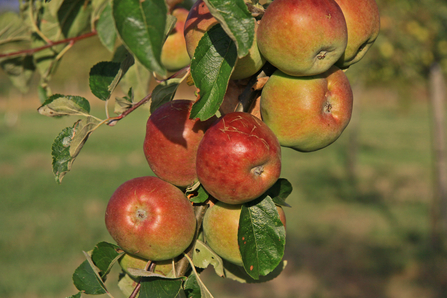Julie waxed lyrical about the importance of orchards, both for wildlife and our folk memory in her awesome orchards blog back in January. I won’t try to repeat that here (I can’t compete with unicorns) but instead bring our focus back to Green Farm and the new orchard that we’ve been working on this year so far.
I say new but there has been orchard on this land on and off for around 200 years. The field that we’ve been creating our new orchard in has been called Gravel Orchard since the 1840s, insinuating that there was probably orchard there before. It's fairly obvious why orchards have been and continue to be such a valuable resource to us. To be able to not only gather a harvest, which will last throughout the dark and cold winter months without spoiling, but to also give extra grazing for your animals must have been hugely important to our ancestors.



